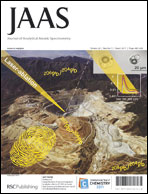The aim of this study was to define suitable conditions for sample handling and storage of urine samples in order to ensure reliable analysis of selenium-containing volatile metabolites. Short-term stability testing (from sample collection to 30–35 hours) included: temperature (room, i.e. 22 ± 2 °C, refrigerator (4 °C)), the presence and absence of light, and addition of a bactericide (0.05% NaN3). The long-term stability study evaluated urine storage at −20 and −80 °C over a period of 4 weeks. This work was conducted with normal urine samples, i.e. from non-supplemented human volunteers, in order to profile baseline metabolites and corresponding concentration levels. The results indicate that urine samples should be maintained in the dark immediately after collection and preferably analyzed within the day of collection. If temporary storage cannot be avoided, it should be at 4 °C after addition of NaN3. For longer period, urine samples can be stored at −20 or −80 °C without measurable changes respectively for 2 to 4 weeks.

You have access to this article
 Please wait while we load your content...
Something went wrong. Try again?
Please wait while we load your content...
Something went wrong. Try again?


 Please wait while we load your content...
Please wait while we load your content...